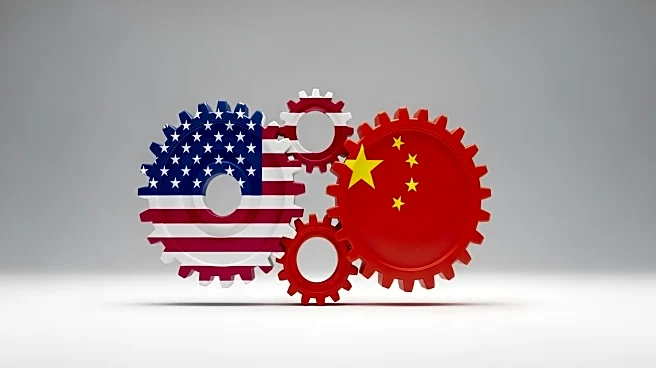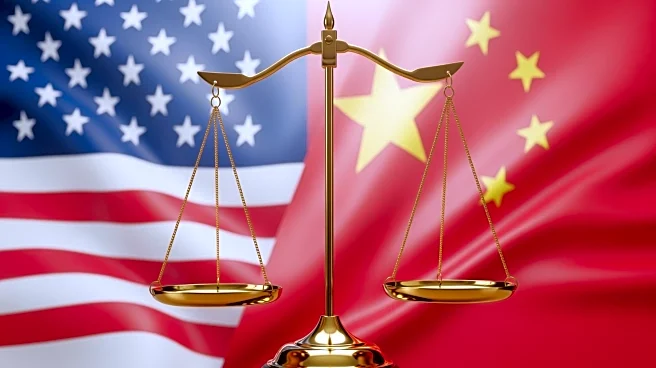What's Happening?
Soybean and grain futures experienced a significant surge following the announcement of a potential trade deal between the U.S. and China. The agreement, which is expected to be finalized during a meeting
between President Trump and President Xi Jinping later this week, has led to increased optimism in the agricultural markets. Soybean futures for November delivery rose by 18 1/4¢ to $10.78 1/2 a bushel, while corn and wheat futures also saw notable increases. The deal includes negotiations over TikTok's U.S. operations and rare-earth minerals, with China expected to resume purchases of U.S. soybeans. Treasury Secretary Scott Bessent described the deal as a 'very successful framework,' although Chinese officials have expressed skepticism, noting that the agreement is preliminary.
Why It's Important?
The potential trade deal between the U.S. and China is significant for the agricultural industry, particularly for soybean producers who have been affected by previous trade tensions. The resumption of Chinese purchases of U.S. soybeans could lead to increased demand and higher prices, benefiting American farmers. Additionally, the agreement may ease tensions between the two countries, potentially leading to more stable trade relations and economic growth. However, the skepticism from Chinese officials suggests that the deal may face challenges, and its success will depend on the outcomes of the upcoming meeting between the two leaders.
What's Next?
President Trump and President Xi Jinping are expected to meet on the sidelines of an economic forum in South Korea to discuss the trade deal further. The meeting could lead to the finalization of the agreement, impacting future trade policies and economic relations between the U.S. and China. Stakeholders in the agricultural industry will be closely monitoring the developments, as the deal's success could influence market dynamics and trade strategies.
Beyond the Headlines
The trade deal could have broader implications for international trade relations, potentially setting a precedent for future negotiations between major economic powers. It may also influence global agricultural markets, affecting prices and production strategies worldwide.












